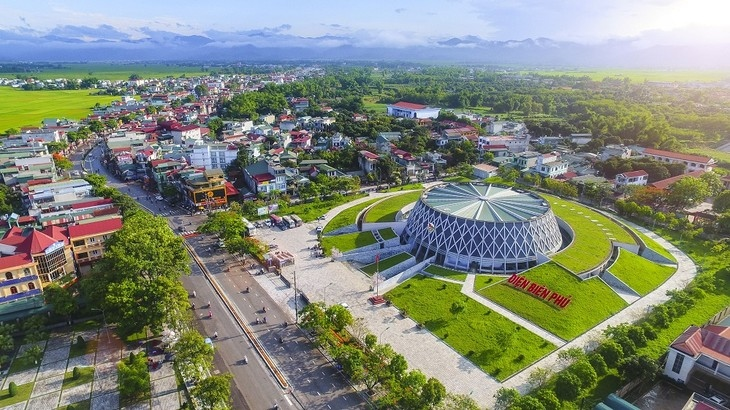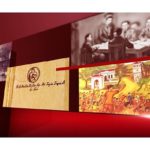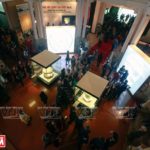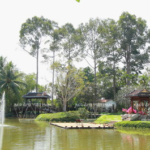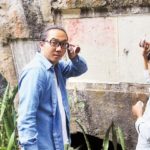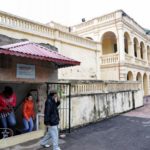May 7, a significant date in history, commemorates the 70th anniversary of a pivotal moment that forced French colonialists to negotiate and ultimately sign the Geneva Accords, bringing an end to the war and restoring peace in Indochina in 1954.
The Dien Bien Phu Victory Museum guides are dedicated and passionate, tirelessly sharing stories of the Vietnamese army and people’s resilience during the battle of Dien Bien Phu seven decades ago. Their enthusiasm knows no bounds as they aim to leave visitors with a deep impression of the touching stories and artifacts on display.
Beyond merely reciting facts, these guides convey a sense of pride, love for their homeland, and gratitude for the sacrifices made by their predecessors. It is this heartfelt connection that makes their tours so memorable.
The museum brings to life the 56-day campaign, as depicted in To Huu’s poem, where soldiers braved mountains, slept in tunnels, endured pouring rain, and fought with unwavering determination. Their resourcefulness and courage culminated in a monumental victory for the Vietnamese people.
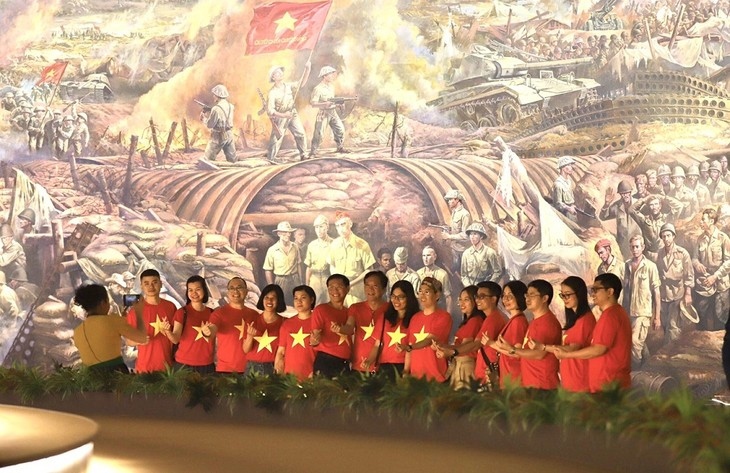
Nguyen Van Dao, a veteran from Hai Phong city, shared his emotions upon returning to Dien Bien and visiting these historic sites. He was deeply moved by the vivid portrayal of the Dien Bien soldiers and the spirit of the Vietnamese resistance war against the French army.
A standout feature of the museum is a breathtaking bronze panoramic painting that showcases the progression of the Dien Bien Phu campaign. As the largest painting of its kind in Southeast Asia and the third-largest in the world, it offers viewers a comprehensive and immersive experience of the battlefield.
Nguyen Hoai Phuong, a young tourist from Ho Chi Minh City, was particularly touched by the painting, expressing her pride and appreciation for the sacrifices made by the Dien Bien soldiers. “I cried a lot when I saw the painting,” she shared, reflecting on the hardships they endured.
According to Vu Thi Tuyet Nga, the museum’s director, this year has seen an influx of tourists eager to explore the museum and learn more about this significant battle. The museum strives to educate visitors about the battlefield relics and the far-reaching impact of the Dien Bien Phu victory, both for Vietnam and for peace-loving people worldwide.
Marking the 70th anniversary of the Dien Bien Phu Victory and coinciding with Dien Bien National Tourism Year, the museum has introduced innovative ways to engage visitors. This includes the use of 3D movies, 3D mock-up backgrounds combined with 3D mapping, and virtual reality tours to create a truly immersive experience.
Strategically located opposite the A1 National Martyrs Cemetery and near significant landmarks such as A1 Hill, the Martyrs’ Temple, and the Dien Bien Phu Victory Monument, the museum stands as a testament to the victory that echoed across the globe.
It is a place where visitors can immerse themselves in the vivid retelling of a historic triumph, one that continues to inspire and unite people from all walks of life.
Youth long to promote nation’s history
NDO—After three years, 10,000 copies of Ngan nam ao mu (A Thousand Years of Caps and Robes) by Tran Quang Duc have been sold—an impressive number for a history book. His friend, Nguyen Huu Su, is preparing to publish his book Lich su thu phap (History of Calligraphy). They are working on things they believe in.
Secret War Bunker in Thang Long Citadel
The underground bunker is located west of the Department of Operations, the General Staff of the Vietnam’s People Army in the imperial citadel of Thang Long in downtown Hanoi. It played an important role in the American war, especially during the 12 days and nights of the Hanoi-Dien Bien Phu air battle 40 years ago. Recently, the bunker was restored by the Thang Long Heritage Preservation Centre and was officially opened to tourists.
